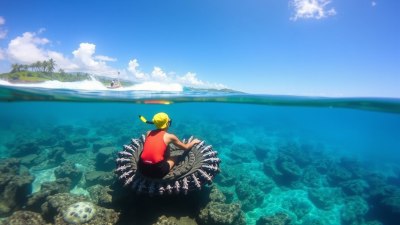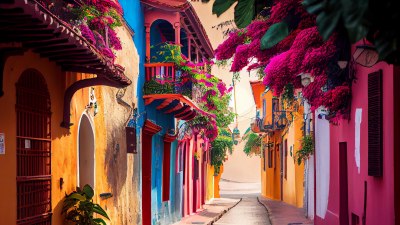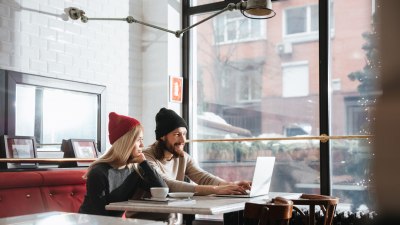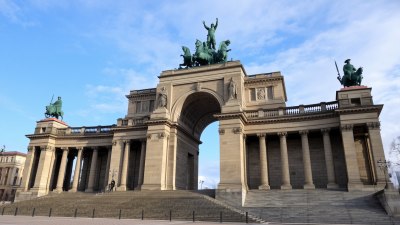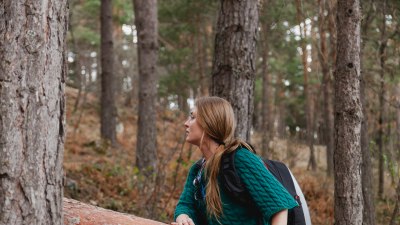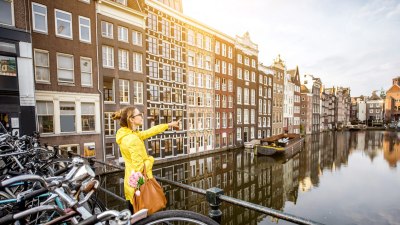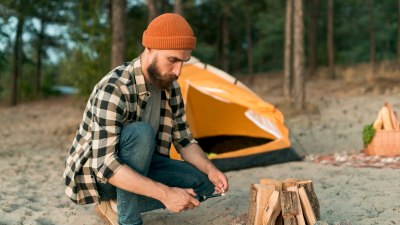The Best Relaxation Techniques for Nervous Travelers
Discover effective relaxation techniques for nervous travelers to ease anxiety and enhance their journey.

This image was created with the assistance of Freepik
Nervous traveling can be an overwhelming experience. The anticipation of a trip often comes with anxiety, whether it's due to flying, navigating unfamiliar places, or meeting new people. Fortunately, there are several relaxation techniques that can help calm those nerves and make travel more enjoyable. In this article, we will explore some of the best methods to find peace and tranquility while on the move.
Understanding Travel Anxiety
Travel anxiety is a common issue affecting many individuals. It can manifest as excessive worry about the journey, fear of flying, or even the stress of packing and logistics. Recognizing that you’re not alone in feeling this way is the first step towards managing anxiety. To effectively combat these feelings, it is important to understand their triggers and develop strategies to address them.
Breathing Techniques
One of the simplest yet most effective relaxation techniques is deep breathing. Engaging in focused breathing can help calm your mind and body, especially during stressful moments. Here’s a simple method you can follow: find a comfortable seat, close your eyes, and inhale deeply through your nose for a count of four. Hold your breath for a count of four, and then slowly exhale through your mouth for a count of six. Repeat this process several times until you feel more at ease.
Progressive Muscle Relaxation
Progressive muscle relaxation (PMR) is another method that can be particularly effective for nervous travelers. This technique involves tensing and then relaxing different muscle groups in your body, allowing you to release built-up tension. To practice PMR, sit or lie down in a quiet space. Start with your toes, tense the muscles tightly for about five seconds, and then release. Work your way up through your feet, legs, abdomen, arms, and face. This technique not only relaxes your body but also helps distract your mind from anxious thoughts.
Visualization
Visualization can be a powerful tool to combat anxiety. By creating a mental image of a calm and peaceful place, you can transport yourself away from stress. Find a quiet place where you can sit comfortably. Close your eyes and take a few deep breaths. Then, picture yourself in a tranquil setting, such as a beach, forest, or serene garden. Engage all your senses to make the scene as vivid as possible. Imagine the sound of waves, the smell of fresh air, and the warmth of the sun. This technique can help you relax and remind you that you can escape your worries at any time.
Meditation
Meditation is an ancient practice that has gained popularity for its numerous health benefits, including anxiety reduction. There are many styles of meditation, but mindfulness meditation is particularly accessible for travelers. To practice, find a quiet space, close your eyes, and focus on your breath. Notice the sensations of inhaling and exhaling, and gently bring your focus back to your breath whenever your mind wanders. Start with just a few minutes each day and gradually increase the time as you become more comfortable with the practice.
Aromatherapy
Aromatherapy utilizes essential oils to promote relaxation and reduce stress. Many essential oils, such as lavender, chamomile, and bergamot, have calming properties. Consider bringing a small bottle of your favorite essential oil on your travels. You can apply a drop to your wrists or temples, use a portable diffuser, or simply inhale the scent directly from the bottle. The soothing fragrance can help ease anxiety and create a more calming travel environment.
Journaling
Journaling can serve as an outlet for your thoughts and emotions, making it a helpful tool for managing travel anxiety. Before your trip, set aside some time to write down your feelings, concerns, and hopes for your upcoming journey. This process can help clarify your thoughts and reduce the weight of anxiety you’re carrying. During your travels, continue journaling to reflect on your experiences, helping you to express yourself and cope with any overwhelming emotions. Documenting your journey can also create a personal keepsake to cherish later.
Mindfulness Practices
Mindfulness is the practice of being fully present in the moment. When you’re traveling, it’s easy to become overwhelmed by thoughts of what’s ahead or regrets about the past. Incorporating mindfulness into your travel experience can help ground you. Start by bringing awareness to your surroundings. Notice the sights, sounds, and smells around you. When waiting in line or sitting at the airport, engage in mindfulness by observing your environment instead of letting your mind race with anxiety. Just focus on the present moment and appreciate your experience.
Engaging in Light Physical Activity
Physical activity is a proven way to alleviate stress and anxiety. Even during travel, there are ways to incorporate movement into your day. Whether it’s a short walk through the airport, a few stretches at your hotel, or a quick yoga session in your room, any form of movement can help release endorphins that boost your mood and promote relaxation. If you have time, consider exploring the area on foot, which not only helps you stay active but also allows you to immerse yourself in your surroundings.
Creating a Travel Routine
Establishing a travel routine can provide a sense of control and structure, which is often reassuring for nervous travelers. Consider creating a pre-travel checklist that outlines everything you need to do before your journey, including packing, organizing travel documents, and setting reminders for any appointments. During your trip, try to maintain consistent routines in areas such as meal times and sleep. Even small routines can help reduce uncertainty and anxiety.
Seeking Support
Remember that you do not have to face travel anxiety alone. Talking to a trusted friend or family member about your concerns can provide relief. Additionally, if you find that anxiety significantly impacts your ability to travel, consider seeking professional help from a therapist. Cognitive-behavioral therapy (CBT) and other therapeutic approaches can provide coping strategies and tools to manage travel-related anxiety effectively.
Preparing for the Journey
Preparation can make a vast difference in how you experience your travels. Plan ahead for potential stressors and ensure you have everything you need for a smooth journey. For example, arrive at the airport early to avoid the stress of rushing, and bring entertainment such as books, podcasts, or music to keep your mind occupied during your flight. If flying is a major trigger for your anxiety, consider taking a fear of flying course to help you learn coping techniques.
Embracing the Adventure
Finally, remember that travel is an adventure filled with opportunities for growth and new experiences. Embrace the unknown and focus on the positives of your journey. Instead of dwelling on anxiety, shift your attention to the excitement of exploring new destinations, meeting different cultures, and creating lasting memories. By adopting a positive mindset, you can help reduce travel anxiety and enhance your travels.
In conclusion, nervous travelers can benefit from a variety of relaxation techniques designed to alleviate anxiety and promote a sense of calm during their journeys. From breathing exercises to meditation, and from journaling to developing a travel routine, these methods offer practical ways to manage stress and enjoy every moment of your travels. With the right tools and mindset, you can overcome your travel anxiety and embrace the beauty of the adventure that awaits you.
